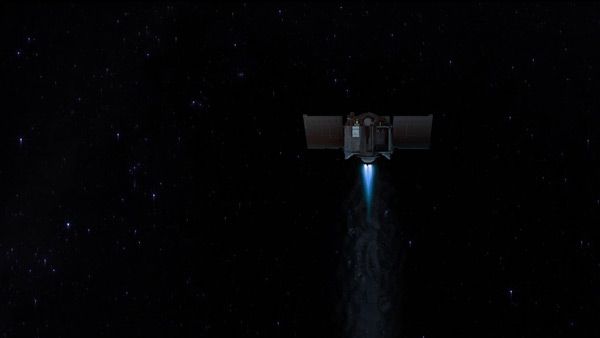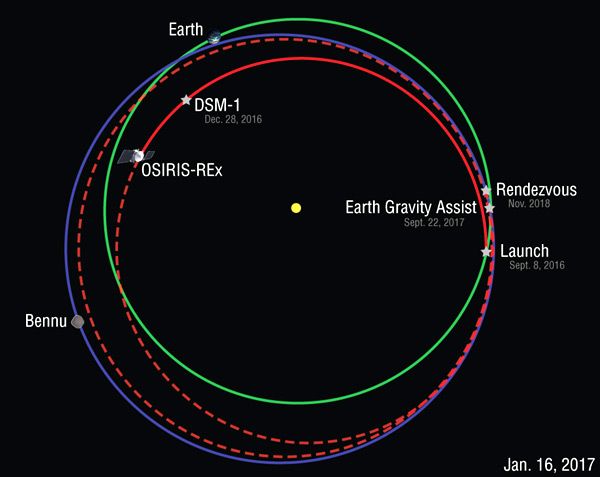
University of Arizona
Successful Deep Space Maneuver for NASA’s OSIRIS-REx Spacecraft (Press Release)
New tracking data confirms that NASA’s OSIRIS-REx spacecraft aced its first Deep Space Maneuver (DSM-1) on Dec. 28, 2016. The engine burn sets up the spacecraft for an Earth gravity assist this fall as it continues its two-year journey to the asteroid Bennu.
The large maneuver was the first using OSIRIS-REx’s main engines and resulted in a 964 miles per hour (431 meters per second) change in the vehicle’s velocity utilizing 780 pounds (354 kilograms) of fuel.
Tracking data from the Deep Space Network (DSN) confirmed the successful maneuver, and subsequent downlink of high-rate telemetry from the spacecraft shows that all subsystems performed as expected.
"DSM-1 was our first major trajectory change and first use of the main engines, so it’s good to have that under our belts and be on a safe trajectory to Bennu," said Arlin Bartels, deputy project manager at NASA’s Goddard Space Flight Center in Greenbelt, Maryland.
DSM-1 represents the first major, post-launch milestone for OSIRIS-REx. The significant change in trajectory from DSM-1 was necessary to put OSIRIS-REx on course for an encounter with Earth in September of this year.
A smaller trajectory correction maneuver will be executed on Wednesday, Jan. 18 to refine the course for the Earth flyby, during which Earth's gravity will bend the OSIRIS-REx trajectory and slinging it toward a rendezvous with the asteroid Bennu in the fall of 2018.
NASA’s Goddard Space Flight Center provides overall mission management, systems engineering and the safety and mission assurance for OSIRIS-REx. Dante Lauretta of the University of Arizona, Tucson, is the principal investigator, and the University of Arizona also leads the science team and the mission’s observation planning and processing. Lockheed Martin Space Systems in Denver built the spacecraft and is providing spacecraft flight operations. Goddard and KinetX Aerospace are responsible for navigating the OSIRIS-REx spacecraft. OSIRIS-REx is the third mission in NASA’s New Frontiers Program. NASA’s Marshall Space Flight Center in Huntsville, Alabama, manages the agency’s New Frontiers Program for its Science Mission Directorate in Washington.
Source: NASA.Gov
****

Courtesy of AsteroidMission.org

No comments:
Post a Comment